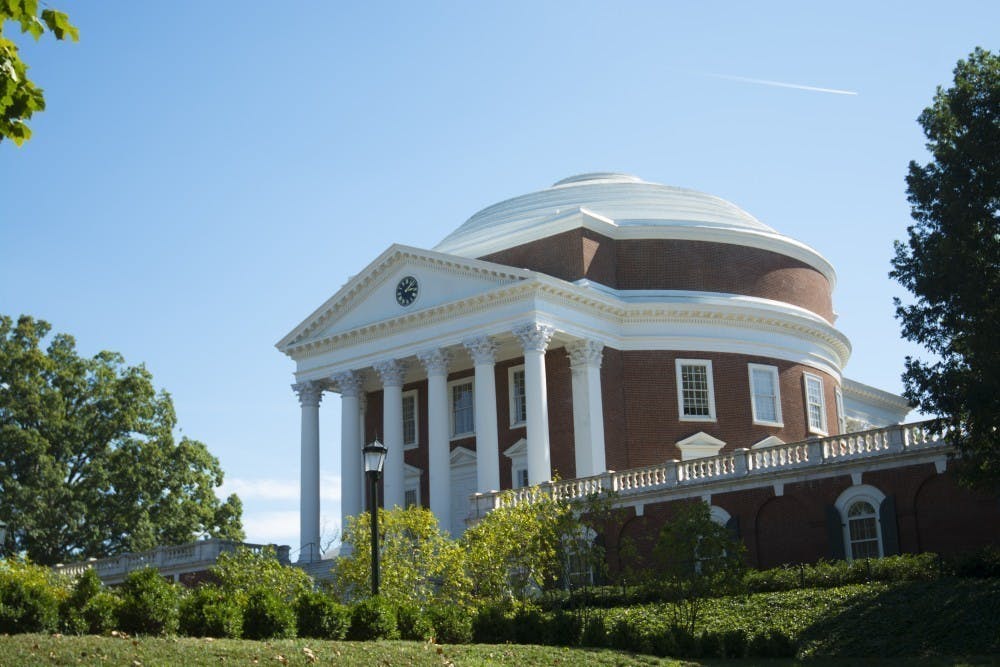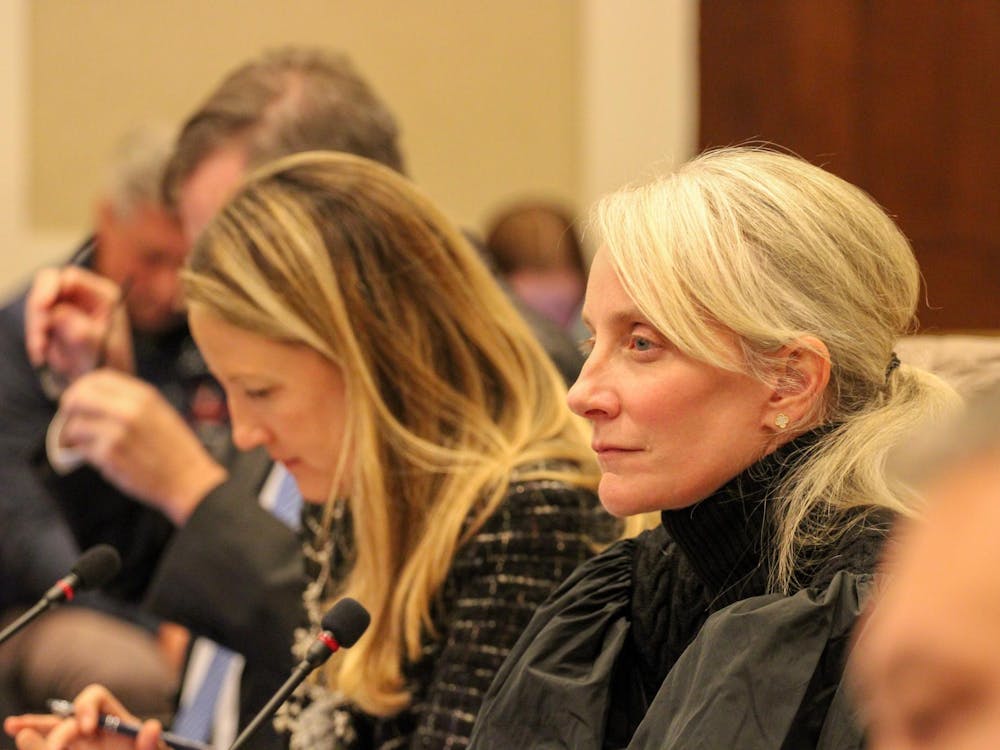University students of East Asian descent say they’ve felt alienated and scared during the COVID-19 pandemic. Since the pandemic began, hate crimes against Asians in the U.S. have increased and stricter regulations have been enforced against international students, particularly those from China.
Since June, over 1,000 Chinese international graduate students and researchers nationwide had their visas revoked by the U.S. government due to students’ alleged links to the Chinese military. The U.S. State Department cited Presidential Proclamation 10043 — announced May 29 — which provided conditions for restricting some Chinese students from entering the country. The proclamation claimed China was using students, mostly those past undergraduate enrollment, to collect sensitive information from the U.S. Some of those students were enrolled at U.Va., according to a document shared by the affected students.
On Aug. 28, a U.Va. researcher from China was arrested and charged for accessing information without authorization and stealing trade secrets. The criminal charges were dropped Sept. 20 after investigation revealed the allegedly stolen material was shared information available to the researcher.
Since the spread of COVID-19 from Wuhan, China, Asians have been strongly connected to the virus in the public sphere. President Donald Trump has called COVID-19 the “Chinese Virus” and “kung flu” — associating Asians with the spread of the virus. The Centers for Disease Control and Prevention says race and ethnicity do not affect who contracts or spreads the virus.
U.S.-China relations have suffered as a result of the pandemic, putting strain on international students from China. There are 1,043 Chinese international students at the University, according to University spokesperson Wes Hester.
A July 6 policy announced and later rescinded by the U.S. Immigrations and Customs Enforcement agency stated international students could not remain in the U.S. if they were not taking classes in-person. The rule affected students with F-1 and M-1 visas, F-1 being the most commonly issued visa for international students. The University reached out to international students promptly expressing support. The International Students & Scholars Program at the University later provided a letter for international students proving their enrollment in in-person classes.
“As an American institution, we are bound to comply with U.S. laws regarding immigration and intellectual property protection,” Hester said in an email to The Cavalier Daily. “As U.S. immigration has tightened visa eligibility for graduate students from China from institutions and in fields linked to the Chinese military, we are pleased that very few of our students have been affected.”
Before COVID
There are 2,539 Asian American students enrolled as undergraduates at the University, making up 15.33 percent of the undergraduate student body, as of 2019. Second-year College student Lana Kweon remembers her impression of the University before the spread of COVID-19.
Walking around Grounds, she would notice only a small number of Asians and Asian Americans outside. Oftentimes in smaller classes, she would be the only minority or Asian present.
Danny Lew, a third-year in the Curry School, describes a similar experience. Coming from a diverse school in Richmond to the University — where 56 percent of the undergraduate population is white — was “overwhelming.” Finding a community of other Asian Americans like him on Grounds was challenging at first.
Fourth-year College student David Dreyer is from Roanoke, Va., a town that is predominantly white, and said he didn’t notice a shift in his surroundings moving to Charlottesville.
“I'm kind of used to being a minority, I guess,” Dreyer said.
Kweon, Lew and Dreyer all expressed familiarity with the term “microaggression” — defined by Oxford Languages as “indirect, subtle, or unintentional discrimination against members of a marginalized group.”
Kweon emphasizes the “ingrained” nature of microaggressions and the difficulty in realizing when such an act has occurred. When she was younger, Kweon didn’t understand that others joking about Asians getting good grades played on Asian stereotypes and even took part as an attempt to fit in with her peers.
“As I got older I realized that I was helping in continuing this toxic way of thinking,” she said.
The belief that all Asians get good grades falls under the model minority myth, which pushes the idea that Asians and Asian Americans are an obedient, law-abiding population that has achieved success through their inherent talent and hardworking nature. While the myth effectively erases individualism and frames Asian Americans as perpetual outsiders, Lew also notes the detrimental effects on minority ethnicities as a whole.
The model minority myth pits Asian Americans against other minorities, he says. For other marginalized races facing systemic inequities, their struggle and the root of their issues are blamed on their lack of ability when held up against the mythologized Asian American.
“They're almost telling these people that are being disadvantaged that they shouldn't be disadvantaged ... and that's unfair,” Lew said.
Lew mentions another common stereotype of emasculating Asian and Asian American men. Dreyer relates a similar experience.
“People will say, ‘You're really good looking for an Asian,’ where it's like a compliment but it's not, because ... then are all Asian guys ugly?” Dreyer said.
During COVID
Once COVID reached the U.S., Lew, Dreyer and Kweon felt a changed attitude. Reading news reports of violent attacks against Asians, Kweon grew scared.
“I think that really shook me because I realized, ‘Oh, there is something to hate about my Asian American identity in the U.S. right now, and it makes me a target for that,’” she said.
As a result, Kweon became more wary as she went on regular runs around her neighborhood. To prevent any potential confrontation, she would actively avoid people on the street and move to the other side well in advance of crossing paths.
Dreyer, who spent the spring semester in Taiwan, returned to the U.S. in May as the outbreak grew more intense. At the airport, he noticed people giving him “weird stares” and moving well out of their way to circumvent him.
“It's just like they assume if you're Asian then you have the virus,” he said.
Lew also mentioned being more cautious in public during COVID. One particular incident that affected him was the attempted assault on two international Chinese students at the University last spring, an incident in which assailants in a passing car threw eggs at the pair near the Aquatic and Fitness Center. The motivation behind the attack was not explicitly clarified, but the personal testimony from one of the involved students on social media terrified Lew.
“I was born in America, right, and so I feel like I'm American and so to have people have these misconceptions of me even though I'm American first is just interesting to me, or scary to me as well,” he said.
With COVID safety guidelines restricting in-person interactions with others, Kweon, Dreyer and Lew have not come across any noticeable changes in actions towards them. Kweon did, however, point out a “heightened awareness” of her identity as an ethnic Korean, which often blends her together with people of Chinese and East Asian descent, from her experience.
During a class discussion on Grounds and COVID, Kweon — who is one of two students who are not white — felt like everyone had eyes on her.
Such heightened awareness has also made her more cautious while outside. Kweon says she has had feelings of wanting to avoid being stigmatized by staying away from other Asian Americans in public. In particular, she tries to not exacerbate the misunderstanding that “coronavirus is Asian.”
With that same reasoning, Kweon feels a greater “obligation” to keep her mask on in public to “set an example” for others.
Following the egging incident in spring, Kweon, Dreyer and Lew feel like the University has not been doing enough to address the increasing threat and discrimination against the Asian and Asian American student body.
“I really don't think they're doing anything,” Kweon said. “And if they are doing stuff they're not making it well-known and advertising the idea that they're working towards eliminating that kind of racist [mentality].”
Lew agreed, specifically mentioning top leadership. Having arrived at the University when University President Jim Ryan was inaugurated, Lew had high hopes for Ryan. Now, Lew finds the University’s management of Asian and Asian American student safety “disappointing.”
In a virtual town hall with the University community on April 2, University President Jim Ryan acknowledged the heightened danger for Asian and Asian American members of the University community.
“I understand that some Asian and Asian American students and faculty have been on the receiving end of xenophobic threats and abuse here in Charlottesville and on Grounds,” Ryan said. “This is both intolerable and reprehensible and for those who have been a target of this abuse I ask that you let us know so we can do our best to stop it.”
Beyond the Asian and Asian American population, Kweon and Lew both feel that racial issues in general have not been handled well. They cite Ryan’s May 31 public statement on the Black Lives Matter movement, in which he dissuaded the “violent protests” incited by the deaths of George Floyd, Ahmaud Arbery and Breonna Taylor. On June 3, he sent out a follow-up email elaborating on his statement and the University’s commitment to racial equity.
Lew says the best thing the University can do to address racial discrimination and inequalities is “to keep these conversations going with student associations and leaders on grounds.” Pointing out the power of student-enacted change, he believes this is a crucial first step to reaching a place that can satisfy everyone.
Kweon also says the University could take a more active role in supporting students in their efforts to improve conditions for themselves, such as by providing resources for allies.
In her own encounters, Kweon strives to speak up for herself.
“A lot of times it will happen afterwards, I’ll be thinking [about] a conversation and think to myself, ‘Oh, wait, that actually was not okay,’” Kweon said. “But if I do catch it in the moment I will say, ‘Okay, that's not something you can really say ... that’s a harmful stereotype. You can't really think that way.’”
When asked about what steps they would take in the case of a racist attack, Dreyer, Lew and Kweon were unable to name a specific University resource to reach out to. The University’s Just Report It system allows students to report a variety of incidents online to the University, including race-based discrimination or harrassment.
“I think it's helpful,” Dreyer said on reporting to the University. “Like it's better than just not saying anything.”
“I think [the University would] be helpful to a certain extent ... but I wouldn't expect them to do much about it,” Lew said.
The CDC provides information on reducing stigma during the COVID pandemic. They include Asian Americans as a group that may experience stigma and suggest community leaders publicly denounce racist behavior and provide resources for those affected.
“One thing to [say to] U.Va. is just ... get your act together,” Kweon said. “Support your students and support being human first.”







